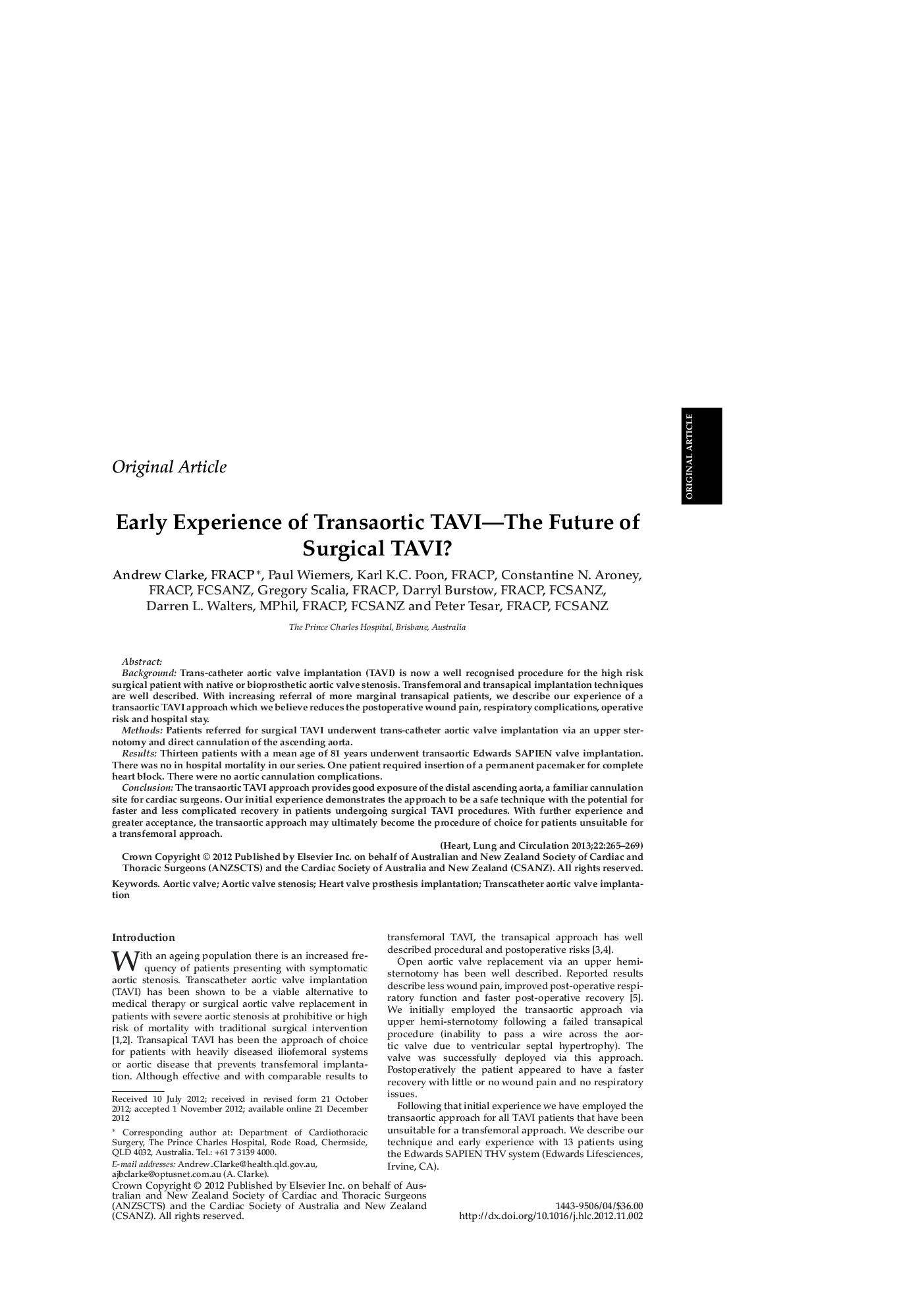| Article ID | Journal | Published Year | Pages | File Type |
|---|---|---|---|---|
| 2917989 | Heart, Lung and Circulation | 2013 | 5 Pages |
BackgroundTrans-catheter aortic valve implantation (TAVI) is now a well recognised procedure for the high risk surgical patient with native or bioprosthetic aortic valve stenosis. Transfemoral and transapical implantation techniques are well described. With increasing referral of more marginal transapical patients, we describe our experience of a transaortic TAVI approach which we believe reduces the postoperative wound pain, respiratory complications, operative risk and hospital stay.MethodsPatients referred for surgical TAVI underwent trans-catheter aortic valve implantation via an upper sternotomy and direct cannulation of the ascending aorta.ResultsThirteen patients with a mean age of 81 years underwent transaortic Edwards SAPIEN valve implantation. There was no in hospital mortality in our series. One patient required insertion of a permanent pacemaker for complete heart block. There were no aortic cannulation complications.ConclusionThe transaortic TAVI approach provides good exposure of the distal ascending aorta, a familiar cannulation site for cardiac surgeons. Our initial experience demonstrates the approach to be a safe technique with the potential for faster and less complicated recovery in patients undergoing surgical TAVI procedures. With further experience and greater acceptance, the transaortic approach may ultimately become the procedure of choice for patients unsuitable for a transfemoral approach.
